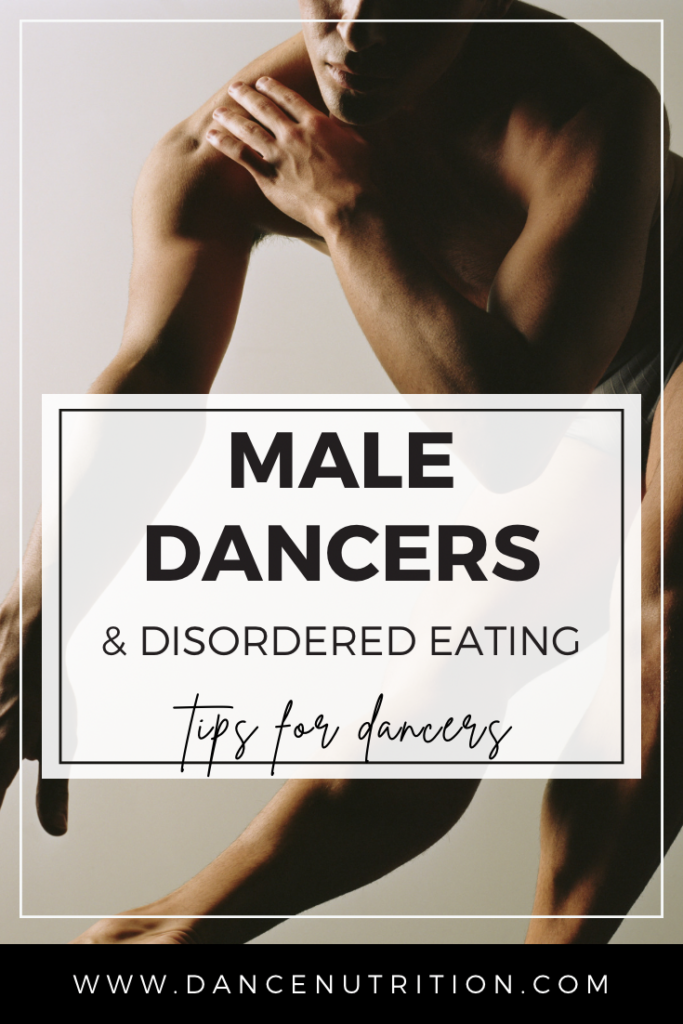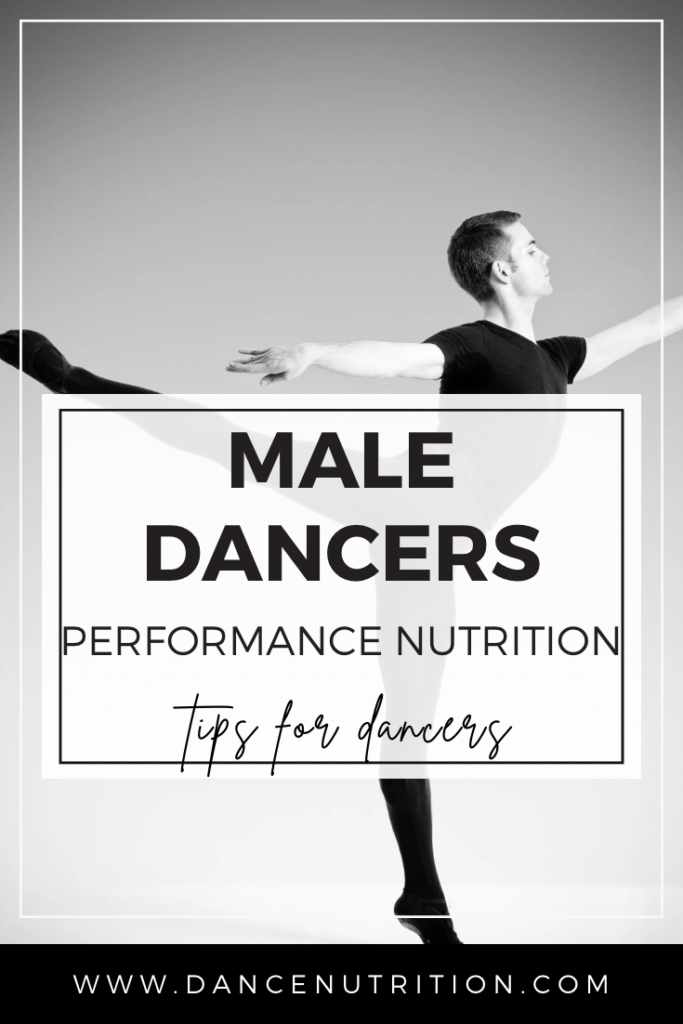Nutritional challenges are common among dancers, especially during intense training schedules. Time constraints, financial limitations, and the risk of disordered eating can affect dancers across the board.
For male dancers, or dancers assigned male at birth, additional challenges— such as limited tailored resources— can make these struggles more difficult. This post highlights the nutrition and body image misinformation male dancers may encounter and offers strategies to build a strong fueling plan.
Eating Disorders and Disordered Eating Among Male Dancers
For many years, disordered eating and eating disorders were thought of as concerns that primarily affected females. Because of this assumption, challenges among other groups often went unnoticed. Today, we know that relative energy deficiency in sport (RED-S), the consequences of inadequate fueling, can impact dancers of all backgrounds.
Recognize the Signs of Disordered Eating
Recognizing early signs is important so that support can be provided before issues escalate.
- Frequent thoughts about food, calories, or weight
- Strict dietary rules (such as “clean” eating)
- Guilt or anxiety when eating foods considered less healthy
- Skipping meals or avoiding eating with others
- Sudden changes in diet, such as eliminating entire food groups
- Episodes of “over” eating followed by shame or compensatory behaviors like excessive exercise
Body Image Concerns in Male Dancers
Body image challenges can affect anyone. For male dancers, pressure to achieve both leanness and muscularity may create added stress. Suggestions to “tone up” or lose weight can encourage dieting or overtraining. For male dancers in particular, a gap in available resources continues to lay the groundwork for these eating and body image disturbances.
Possible signs of body image concerns include:
- Frequently checking the mirror for perceived flaws
- Comparing appearance to peers or athletes
- Feeling that one’s body is never muscular or lean enough
- Exercising beyond what’s required for training
- Working out despite injury or illness
- Using exercise primarily to control weight or shape
Meeting Energy Needs
Long training days raise energy demands. Balancing calorie intake with your energy expenditure is essential to avoiding fatigue and staying focused. Estimates suggest that male dancers may need about 50–55 calories per kilogram of body weight per day, though this varies with training intensity.
Practical strategies include:
- Eating frequent, energy-dense meals and snacks
- Adding a pre-class snack (such as a granola bar) 30–60 minutes before dancing
- Refueling within an hour after training with a mix of carbs, protein, and fluids
Here are a few additional articles to help:
Balanced Nutrition for Male Dancers
#1: The Building Blocks
Meals and snacks should include multiple food sources rich in the three macronutrients:
- Carbohydrates are the primary fuel for high-intensity activity. Sources include whole grains, fruits, vegetables, legumes, and dairy. Aim for about 55–65% of daily intake from carbs. Here’s an article to learn more about a dancer’s carbohydrate needs.
- Protein supports muscle repair and growth. Options include poultry, fish, eggs, dairy, legumes, nuts, and seeds. Most male dancers need about 12%–15% of their daily calories from protein, or 1.2–1.7 grams per kilogram per day, depending on training load. Here’s an article to learn more about a dancer’s protein needs.
- Fats play a role in hormone production, brain health, and energy. Include sources like avocado, nuts, seeds, olive oil, and fatty fish. Around 30% of daily intake from fats— especially unsaturated fats— is recommended. Here’s an article to learn more about the role of fat in a dancer’s meal plan.
#2: Essential Vitamins and Minerals
Eating enough of a varied diet each day is the best tool for accessing a spectrum of vitamins and minerals that support performance and health. Calcium and Vitamin D are crucial for bone health, muscle function, and preventing stress fractures. Dairy products, leafy greens, fortified foods, and sunlight exposure for Vitamin D. Here’s an article that dives deeper into nutrition considerations for bone health.
Iron is important for oxygen transport and energy metabolism. Red meat, poultry, fish, legumes, and fortified cereals. Male dancers need around 8 mg of iron per day from a variety of sources. Here’s an article that dives deeper into the role of iron for dancers.
Antioxidants (Vitamins A, C, and E) protect against oxidative stress and support immune function. Fruits, vegetables, nuts, and seeds. Consume a colorful array of fruits and vegetables to ensure a good intake of antioxidants.
#3: Hydration
Hydration is key for performance, preventing cramps, and preventing injury. Dehydration can lead to fatigue, poor coordination, and increased risk of injury. Small, frequent sips throughout the day work better than large gulps. For dancers who sweat heavily, especially in long rehearsals, sports drinks or salty snacks can help replace electrolytes. Here’s an article that dives deeper into the role of hydration for dancers.
Next Steps: Nutrition For Male Dancers
For male dancers experiencing fatigue, hormonal changes, or recurring injuries, medical tests such as blood work or a bone density scan may provide helpful information. However, normal results don’t always rule out nutrition or body image struggles.
A supportive approach considers the entire picture: eating habits, training schedules, supplement use, and mental well-being. Working with a registered dietitian nutritionist who understands dance can be an important step in ensuring both health and performance.




